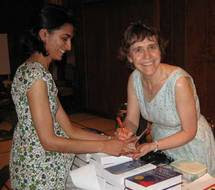To honour the return of birds in the
spring and the birthday of the renowned bird painter John James
Audubon (born 26 April, 1785), let's look at the hard-to-spell
ptarmigan, a grouse-like bird found in the far north.
Its name comes from a Gaelic word, tàrmachan, meaning “grumbler” or “croaker”, presumably in reference to the sound the bird makes. In Gaelic, as you see, there was no “p” at the beginning of the word. But in the late 17th century, some meddlesome person, thinking the word was derived from the Greek ptero (meaning “feather” or “wing”), stuck a “p” at the beginning to reflect its “Greek” origin (that it doesn't have). It's been there ever since.
Thank goodness they didn't get a hold of the Canada … pgoose!
Its name comes from a Gaelic word, tàrmachan, meaning “grumbler” or “croaker”, presumably in reference to the sound the bird makes. In Gaelic, as you see, there was no “p” at the beginning of the word. But in the late 17th century, some meddlesome person, thinking the word was derived from the Greek ptero (meaning “feather” or “wing”), stuck a “p” at the beginning to reflect its “Greek” origin (that it doesn't have). It's been there ever since.
Thank goodness they didn't get a hold of the Canada … pgoose!
 |
| Ptarmigan as painted by Audubon REMINDER: March 16 "Tea and Wordlady": Bachelor for Rent: Things You Never Suspected About Canadian English. More info here: http://katherinebarber.blogspot.ca/2016/02/tea-and-wordlady-wednesday-16-march.html |

